Coherence (physics)
In physics, two wave sources are perfectly coherent if they have a constant phase difference and the same frequency, and the same waveform. Coherence is an ideal property of waves that enables stationary (i.e. temporally and spatially constant) interference. It contains several distinct concepts, which are limiting cases that never quite occur in reality but allow an understanding of the physics of waves, and has become a very important concept in quantum physics. More generally, coherence describes all properties of the correlation between physical quantities of a single wave, or between several waves or wave packets.
Interference is the addition, in the mathematical sense, of wave functions. A single wave can interfere with itself, but this is still an addition of two waves (see Young's slits experiment). Constructive or destructive interferences are limit cases, and two waves always interfere, even if the result of the addition is complicated or not remarkable.
When interfering, two waves can add together to create a wave of greater amplitude than either one (constructive interference) or subtract from each other to create a wave of lesser amplitude than either one (destructive interference), depending on their relative phase. Two waves are said to be coherent if they have a constant relative phase. The amount of coherence can readily be measured by the interference visibility, which looks at the size of the interference fringes relative to the input waves (as the phase offset is varied); a precise mathematical definition of the degree of coherence is given by means of correlation functions.
Spatial coherence describes the correlation (or predictable relationship) between waves at different points in space, either lateral or longitudinal.[1] Temporal coherence describes the correlation between waves observed at different moments in time. Both are observed in the Michelson–Morley experiment and Young's interference experiment. Once the fringes are obtained in the Michelson interferometer, when one of the mirrors is moved away gradually, the time for the beam to travel increases and the fringes become dull and finally disappear, showing temporal coherence. Similarly, if in a double-slit experiment, the space between the two slits is increased, the coherence dies gradually and finally the fringes disappear, showing spatial coherence. In both cases, the fringe amplitude slowly disappears, as the path difference increases past the coherence length.
Contents
1 Introduction
2 Mathematical definition
3 Coherence and correlation
4 Examples of wave-like states
5 Temporal coherence
5.1 The relationship between coherence time and bandwidth
5.2 Examples of temporal coherence
5.3 Measurement of temporal coherence
6 Spatial coherence
6.1 Examples of spatial coherence
7 Spectral coherence
7.1 Measurement of spectral coherence
8 Polarization and coherence
9 Applications
9.1 Holography
9.2 Non-optical wave fields
9.3 Modal Analysis
10 Quantum coherence
11 See also
12 References
13 External links
Introduction
Coherence was originally conceived in connection with Thomas Young's double-slit experiment in optics but is now used in any field that involves waves, such as acoustics, electrical engineering, neuroscience, and quantum mechanics. Coherence describes the statistical similarity of a field (electromagnetic field, quantum wave packet etc.) at two points in space or time[2]. The property of coherence is the basis for commercial applications such as holography, the Sagnac gyroscope, radio antenna arrays, optical coherence tomography and telescope interferometers (astronomical optical interferometers and radio telescopes).
Mathematical definition
A precise definition is given at degree of coherence.
The coherence function between two signals x(t){displaystyle x(t)}

- γxy2(f)=|Sxy(f)|2Sxx(f)Syy(f){displaystyle gamma _{xy}^{2}(f)={frac {|S_{xy}(f)|^{2}}{S_{xx}(f)S_{yy}(f)}}}
where Sxy(f){displaystyle S_{xy}(f)}






The coherence varies in the interval 0⩽γxy2(f)⩽1.{displaystyle 0leqslant gamma _{xy}^{2}(f)leqslant 1.}




Coherence and correlation
The coherence of two waves expresses how well correlated the waves are as quantified by the cross-correlation function.[4][5][6][7][8] The cross-correlation quantifies the ability to predict the phase of the second wave by knowing the phase of the first. As an example, consider two waves perfectly correlated for all times. At any time, phase difference will be constant.[clarification needed] If, when combined, they exhibit perfect constructive interference, perfect destructive interference, or something in-between but with constant phase difference, then it follows that they are perfectly coherent. As will be discussed below, the second wave need not be a separate entity. It could be the first wave at a different time or position. In this case, the measure of correlation is the autocorrelation function (sometimes called self-coherence). Degree of correlation involves correlation functions.[9]:545-550
Examples of wave-like states
These states are unified by the fact that their behavior is described by a wave equation or some generalization thereof.
- Waves in a rope (up and down) or slinky (compression and expansion)
Surface waves in a liquid
Electromagnetic signals (fields) in transmission lines
- Sound
Radio waves and Microwaves
Light waves (optics)
Electrons, atoms and any other object (such as a baseball), as described by quantum physics
In most of these systems, one can measure the wave directly. Consequently, its correlation with another wave can simply be calculated. However, in optics one cannot measure the electric field directly as it oscillates much faster than any detector's time resolution.[10] Instead, we measure the intensity of the light. Most of the concepts involving coherence which will be introduced below were developed in the field of optics and then used in other fields. Therefore, many of the standard measurements of coherence are indirect measurements, even in fields where the wave can be measured directly.
Temporal coherence

Figure 1: The amplitude of a single frequency wave as a function of time t (red) and a copy of the same wave delayed by τ (blue). The coherence time of the wave is infinite since it is perfectly correlated with itself for all delays τ.[11]:118
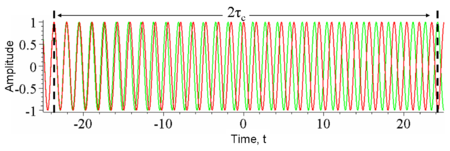
Figure 2: The amplitude of a wave whose phase drifts significantly in time τc as a function of time t (red) and a copy of the same wave delayed by 2τc(green). At any particular time t the wave can interfere perfectly with its delayed copy. But, since half the time the red and green waves are in phase and half the time out of phase, when averaged over t any interference disappears at this delay.
Temporal coherence is the measure of the average correlation between the value of a wave and itself delayed by τ, at any pair of times. Temporal coherence tells us how monochromatic a source is. In other words, it characterizes how well a wave can interfere with itself at a different time. The delay over which the phase or amplitude wanders by a significant amount (and hence the correlation decreases by significant amount) is defined as the coherence time τc. At a delay of τ=0 the degree of coherence is perfect, whereas it drops significantly as the delay passes τ=τc. The coherence length Lc is defined as the distance the wave travels in time τc.[9]:560, 571–573
One should be careful not to confuse the coherence time with the time duration of the signal, nor the coherence length with the coherence area (see below).
The relationship between coherence time and bandwidth
It can be shown that the larger the range of frequencies Δf a wave contains, the faster the wave decorrelates (and hence the smaller τc is). Thus there is a tradeoff:[9]:358-359, 560
τcΔf≲1{displaystyle tau _{c}Delta flesssim 1}.
Formally, this follows from the convolution theorem in mathematics, which relates the Fourier transform of the power spectrum (the intensity of each frequency) to its autocorrelation.[9]:572
Examples of temporal coherence
We consider four examples of temporal coherence.
- A wave containing only a single frequency (monochromatic) is perfectly correlated with itself at all time delays, in accordance with the above relation. (See Figure 1)
- Conversely, a wave whose phase drifts quickly will have a short coherence time. (See Figure 2)
- Similarly, pulses (wave packets) of waves, which naturally have a broad range of frequencies, also have a short coherence time since the amplitude of the wave changes quickly. (See Figure 3)
- Finally, white light, which has a very broad range of frequencies, is a wave which varies quickly in both amplitude and phase. Since it consequently has a very short coherence time (just 10 periods or so), it is often called incoherent.
Monochromatic sources are usually lasers; such high monochromaticity implies long coherence lengths (up to hundreds of meters). For example, a stabilized and monomode helium–neon laser can easily produce light with coherence lengths of 300 m.[12] Not all lasers are monochromatic, however (e.g. for a mode-locked Ti-sapphire laser, Δλ ≈ 2 nm - 70 nm). LEDs are characterized by Δλ ≈ 50 nm, and tungsten filament lights exhibit Δλ ≈ 600 nm, so these sources have shorter coherence times than the most monochromatic lasers.
Holography requires light with a long coherence time. In contrast, optical coherence tomography, in its classical version, uses light with a short coherence time.
Measurement of temporal coherence

Figure 3: The amplitude of a wavepacket whose amplitude changes significantly in time τc (red) and a copy of the same wave delayed by 2τc(green) plotted as a function of time t. At any particular time the red and green waves are uncorrelated; one oscillates while the other is constant and so there will be no interference at this delay. Another way of looking at this is the wavepackets are not overlapped in time and so at any particular time there is only one nonzero field so no interference can occur.

Figure 4: The time-averaged intensity (blue) detected at the output of an interferometer plotted as a function of delay τ for the example waves in Figures 2 and 3. As the delay is changed by half a period, the interference switches between constructive and destructive. The black lines indicate the interference envelope, which gives the degree of coherence. Although the waves in Figures 2 and 3 have different time durations, they have the same coherence time.
In optics, temporal coherence is measured in an interferometer such as the Michelson interferometer or Mach–Zehnder interferometer. In these devices, a wave is combined with a copy of itself that is delayed by time τ. A detector measures the time-averaged intensity of the light exiting the interferometer. The resulting interference visibility (e.g. see Figure 4) gives the temporal coherence at delay τ. Since for most natural light sources, the coherence time is much shorter than the time resolution of any detector, the detector itself does the time averaging. Consider the example shown in Figure 3. At a fixed delay, here 2τc, an infinitely fast detector would measure an intensity that fluctuates significantly over a time t equal to τc. In this case, to find the temporal coherence at 2τc, one would manually time-average the intensity.
Spatial coherence
In some systems, such as water waves or optics, wave-like states can extend over one or two dimensions. Spatial coherence describes the ability for two points in space, x1 and x2, in the extent of a wave to interfere, when averaged over time. More precisely, the spatial coherence is the cross-correlation between two points in a wave for all times. If a wave has only 1 value of amplitude over an infinite length, it is perfectly spatially coherent. The range of separation between the two points over which there is significant interference defines the diameter of the coherence area, Ac [13] (Coherence length, often a feature of a source, is usually an industrial term related to the coherence time of the source, not the coherence area in the medium.) Ac is the relevant type of coherence for the Young's double-slit interferometer. It is also used in optical imaging systems and particularly in various types of astronomy telescopes. Sometimes people also use "spatial coherence" to refer to the visibility when a wave-like state is combined with a spatially shifted copy of itself.
Examples of spatial coherence
- Spatial coherence

Figure 5: A plane wave with an infinite coherence length.
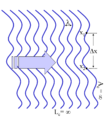
Figure 6: A wave with a varying profile (wavefront) and infinite coherence length.
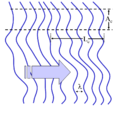
Figure 7: A wave with a varying profile (wavefront) and finite coherence length.

Figure 8: A wave with finite coherence area is incident on a pinhole (small aperture). The wave will diffract out of the pinhole. Far from the pinhole the emerging spherical wavefronts are approximately flat. The coherence area is now infinite while the coherence length is unchanged.

Figure 9: A wave with infinite coherence area is combined with a spatially shifted copy of itself. Some sections in the wave interfere constructively and some will interfere destructively. Averaging over these sections, a detector with length D will measure reduced interference visibility. For example, a misaligned Mach–Zehnder interferometer will do this.
Consider a tungsten light-bulb filament. Different points in the filament emit light independently and have no fixed phase-relationship. In detail, at any point in time the profile of the emitted light is going to be distorted. The profile will change randomly over the coherence time τc{displaystyle tau _{c}}

Holography requires temporally and spatially coherent light. Its inventor, Dennis Gabor, produced successful holograms more than ten years before lasers were invented. To produce coherent light he passed the monochromatic light from an emission line of a mercury-vapor lamp through a pinhole spatial filter.
In February 2011 it was reported that helium atoms, cooled to near absolute zero / Bose–Einstein condensate state, can be made to flow and behave as a coherent beam as occurs in a laser.[14][15]
Spectral coherence
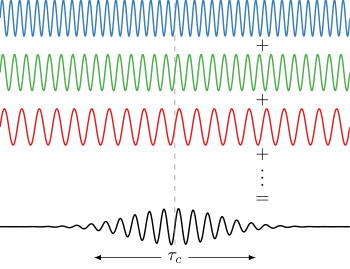
Figure 10: Waves of different frequencies interfere to form a localized pulse if they are coherent.
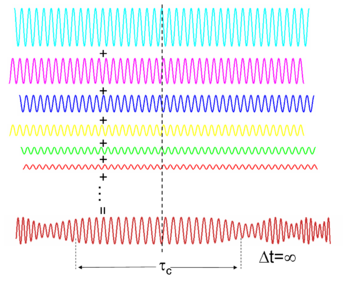
Figure 11: Spectrally incoherent light interferes to form continuous light with a randomly varying phase and amplitude
Waves of different frequencies (in light these are different colours) can interfere to form a pulse if they have a fixed relative phase-relationship (see Fourier transform). Conversely, if waves of different frequencies are not coherent, then, when combined, they create a wave that is continuous in time (e.g. white light or white noise). The temporal duration of the pulse Δt{displaystyle Delta t}

ΔfΔt≥1{displaystyle Delta fDelta tgeq 1},
which follows from the properties of the Fourier transform and results in Küpfmüller's uncertainty principle (for quantum particles it also results in the Heisenberg uncertainty principle).
If the phase depends linearly on the frequency (i.e. θ(f)∝f{displaystyle theta (f)propto f}
Measurement of spectral coherence
Measurement of the spectral coherence of light requires a nonlinear optical interferometer, such as an intensity optical correlator, frequency-resolved optical gating (FROG), or spectral phase interferometry for direct electric-field reconstruction (SPIDER).
Polarization and coherence
Light also has a polarization, which is the direction in which the electric field oscillates. Unpolarized light is composed of incoherent light waves with random polarization angles. The electric field of the unpolarized light wanders in every direction and changes in phase over the coherence time of the two light waves. An absorbing polarizer rotated to any angle will always transmit half the incident intensity when averaged over time.
If the electric field wanders by a smaller amount the light will be partially polarized so that at some angle, the polarizer will transmit more than half the intensity. If a wave is combined with an orthogonally polarized copy of itself delayed by less than the coherence time, partially polarized light is created.
The polarization of a light beam is represented by a vector in the Poincaré sphere. For polarized light the end of the vector lies on the surface of the sphere, whereas the vector has zero length for unpolarized light. The vector for partially polarized light lies within the sphere
Applications
Holography
Coherent superpositions of optical wave fields include holography. Holographic objects are used frequently in daily life in bank notes and credit cards.
Non-optical wave fields
Further applications concern the coherent superposition of non-optical wave fields. In quantum mechanics for example one considers a probability field, which is related to the wave function ψ(r){displaystyle psi (mathbf {r} )}
Modal Analysis
Coherence is used to check the quality of the transfer functions (FRFs) being measured. Low coherence can be caused by poor signal to noise ratio, and/or inadequate frequency resolution.
Quantum coherence
In quantum mechanics, all objects have wave-like properties (see de Broglie waves). For instance, in Young's double-slit experiment electrons can be used in the place of light waves. Each electron's wave-function goes through both slits, and hence has two separate split-beams that contribute to the intensity pattern on a screen. According to standard wave theory
[16]
these two contributions give rise to an intensity pattern of bright bands due to constructive interference, interlaced with dark bands due to destructive interference, on a downstream screen. This ability to interfere and diffract is related to coherence (classical or quantum) of the waves produced at both slits. The association of an electron with a wave is unique to quantum theory.
When the incident beam is represented by a quantum pure state, the split beams downstream of the two slits are represented as a superposition of the pure states representing each split beam
[17]
. The quantum description of imperfectly coherent paths is called a mixed state. A perfectly coherent state has a density matrix (also called the "statistical operator") that is a projection onto the pure coherent state and is equivalent to a wave function, while a mixed state is described by a classical probability distribution for the pure states that make up the mixture.
Macroscopic scale quantum coherence leads to novel phenomena, the so-called macroscopic quantum phenomena. For instance, the laser, superconductivity and superfluidity are examples of highly coherent quantum systems whose effects are evident at the macroscopic scale. The macroscopic quantum coherence (Off-Diagonal Long-Range Order, ODLRO)[18][19]
for superfluidity, and laser light, is related to first-order (1-body) coherence/ODLRO, while superconductivity is related to second-order coherence/ODLRO. (For fermions, such as electrons, only even orders of coherence/ODLRO are possible.) For bosons, a Bose–Einstein condensate is an example of a system exhibiting macroscopic quantum coherence through a multiple occupied single-particle state.
The classical electromagnetic field exhibits macroscopic quantum coherence. The most obvious example is the carrier signal for radio and TV. They satisfy Glauber's quantum description of coherence.
Recently M.B. Plenio and co-workers constructed an operational formulation of quantum coherence as a resource theory. They introduced coherence monotones analogous to the entanglement monotones.[20]. Quantum coherence has been shown to be equivalent to quantum entanglement [21] in the sense that coherence can be faithfully described as entanglement, and conversely that each entanglement measure corresponds to a coherence measure.
See also
- Atomic coherence
- Coherence length
- Coherent state
- Laser linewidth
- Measurement in quantum mechanics
- Measurement problem
- Optical heterodyne detection
- Quantum Biology
- Quantum Zeno effect
- Wave superposition
References
^ Hecht (1998). Optics (3rd ed.). Addison Wesley Longman. pp. 554–574. ISBN 0-201-83887-7..mw-parser-output cite.citation{font-style:inherit}.mw-parser-output .citation q{quotes:"""""""'""'"}.mw-parser-output .citation .cs1-lock-free a{background:url("//upload.wikimedia.org/wikipedia/commons/thumb/6/65/Lock-green.svg/9px-Lock-green.svg.png")no-repeat;background-position:right .1em center}.mw-parser-output .citation .cs1-lock-limited a,.mw-parser-output .citation .cs1-lock-registration a{background:url("//upload.wikimedia.org/wikipedia/commons/thumb/d/d6/Lock-gray-alt-2.svg/9px-Lock-gray-alt-2.svg.png")no-repeat;background-position:right .1em center}.mw-parser-output .citation .cs1-lock-subscription a{background:url("//upload.wikimedia.org/wikipedia/commons/thumb/a/aa/Lock-red-alt-2.svg/9px-Lock-red-alt-2.svg.png")no-repeat;background-position:right .1em center}.mw-parser-output .cs1-subscription,.mw-parser-output .cs1-registration{color:#555}.mw-parser-output .cs1-subscription span,.mw-parser-output .cs1-registration span{border-bottom:1px dotted;cursor:help}.mw-parser-output .cs1-ws-icon a{background:url("//upload.wikimedia.org/wikipedia/commons/thumb/4/4c/Wikisource-logo.svg/12px-Wikisource-logo.svg.png")no-repeat;background-position:right .1em center}.mw-parser-output code.cs1-code{color:inherit;background:inherit;border:inherit;padding:inherit}.mw-parser-output .cs1-hidden-error{display:none;font-size:100%}.mw-parser-output .cs1-visible-error{font-size:100%}.mw-parser-output .cs1-maint{display:none;color:#33aa33;margin-left:0.3em}.mw-parser-output .cs1-subscription,.mw-parser-output .cs1-registration,.mw-parser-output .cs1-format{font-size:95%}.mw-parser-output .cs1-kern-left,.mw-parser-output .cs1-kern-wl-left{padding-left:0.2em}.mw-parser-output .cs1-kern-right,.mw-parser-output .cs1-kern-wl-right{padding-right:0.2em}
^ Emil., Wolf, (2007). Introduction to the theory of coherence and polarization of light. Cambridge: Cambridge University Press. ISBN 9780521822114. OCLC 149011826.
^ Shin. K, Hammond. J. Fundamentals of signal processing for sound and vibration engineers. John Wiley & Sons, 2008.
^
Rolf G. Winter; Aephraim M. Steinberg (2008). "Coherence". AccessScience. McGraw-Hill.
^
M.Born; E. Wolf (1999). Principles of Optics (7th ed.). Cambridge University Press. ISBN 978-0-521-64222-4.
^
Loudon, Rodney (2000). The Quantum Theory of Light. Oxford University Press. ISBN 0-19-850177-3.
^
Leonard Mandel; Emil Wolf (1995). Optical Coherence and Quantum Optics. Cambridge University Press. ISBN 0-521-41711-2.
^
Arvind Marathay (1982). Elements of Optical Coherence Theory. John Wiley & Sons. ISBN 0-471-56789-2.
^ abcd Hecht, Eugene (2002), Optics (4th ed.), United States of America: Addison Wesley, ISBN 0-8053-8566-5
^
Peng, J.-L.; Liu, T.-A.; Shu, R.-H. (2008). "Optical frequency counter based on two mode-locked fiber laser combs". Applied Physics B. 92 (4): 513. Bibcode:2008ApPhB..92..513P. doi:10.1007/s00340-008-3111-6.
^ Christopher Gerry; Peter Knight (2005). Introductory Quantum Optics. Cambridge University Press. ISBN 978-0-521-52735-4.
^ Saleh, Teich. Fundamentals of Photonics. Wiley.
^ Goodman (1985). Statistical Optics (1st ed.). Wiley-Interscience. pp. 210, 221. ISBN 0-471-01502-4.
^
Hodgman, S. S.; Dall, R. G.; Manning, A. G.; Baldwin, K. G. H.; Truscott, A. G. (2011). "Direct Measurement of Long-Range Third-Order Coherence in Bose-Einstein Condensates". Science. 331 (6020): 1046–1049. Bibcode:2011Sci...331.1046H. doi:10.1126/science.1198481. PMID 21350171.
^
Pincock, S. (25 February 2011). "Cool laser makes atoms march in time". ABC Science. ABC News Online. Retrieved 2011-03-02.
^
A. P. French (2003). Vibrations and Waves. Norton. ISBN 0-393-09936-9.
^
Richard P. Feynman, Robert B. Leighton and Matthew Sands (1963). "Quantum Behaviour". The Feynman Lectures on Physics. III. Addison-Wesley.
^
Penrose, O.; Onsager, L. (1956). "Bose-Einstein Condensation and Liquid Helium". Phys. Rev. 104: 576. Bibcode:1956PhRv..104..576P. doi:10.1103/physrev.104.576.
^
Yang, C.N. (1962). "Concept of Off-Diagonal Long-Range Order and the Quantum Phases of Liquid He and of Superconductors". Rev. Mod. Phys. 34: 694. Bibcode:1962RvMP...34..694Y. doi:10.1103/revmodphys.34.694.
^
Baumgratz, T.; Cramer, M.; Plenio, M.B. (2014). "Quantifying Coherence". Phys. Rev. Lett. 113: 140401. arXiv:1311.0275. Bibcode:2014PhRvL.113n0401B. doi:10.1103/physrevlett.113.140401.
^
Tan, K.C.; Jeong, H. (2018). "Entanglement as the Symmetric Portion of Correlated Coherence". Phys. Rev. Lett. 121: 220401. arXiv:1805.10750. doi:10.1103/PhysRevLett.121.220401.
External links
"Dr. SkySkull". "Optics basics: Coherence". Skulls in the Stars.






